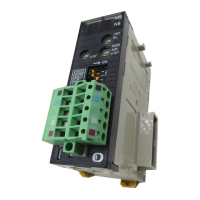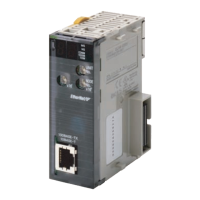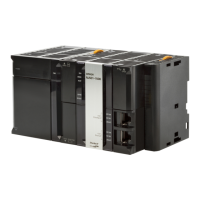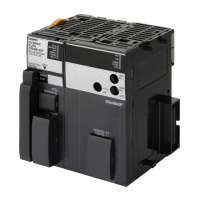166
Origin Search and Origin Return Functions Section 6-3
6-3 Origin Search and Origin Return Functions
6-3-1 Overview
The CJ1M CPU Units have two functions that can be used to determine the
machine origin for positioning.
1,2,3... 1. Origin Search
The origin search function outputs pulses to turn the motor according to
the pattern specified in the origin search parameters. As the motor turns,
the origin search function determines the machine origin from the following
3 kinds of position information.
• Origin input signal
• Origin proximity input signal
• CW limit input signal and CCW limit input signal
2. Changing the Pulse Output PV
When you want to set the current position as the origin, execute INI(880)
to reset the pulse output PV to 0.
The origin location can be determined after using either method.
The CJ1M CPU Units are also equipped with the origin return function, which
can be executed to return the system to the origin after the origin location has
been determined by one of the methods above.
• Origin Return
If the motor is stopped, ORG(889) can be executed to perform an origin
return operation that moves the motor back to the origin position. The ori-
gin position must be determined in advance by performing an origin
search or changing the pulse output PV.
Note The motor can be moved even if the origin position has not been determined,
but positioning operations will be limited as follows:
• Origin return: Cannot be used.
• Positioning with absolute pulse specification: Cannot be used.
• Positioning with relative pulse specification: Outputs the specified number
of pulses after setting the current position to 0.
6-3-2 Origin Search
Overview
When ORG(889) executes an origin search, it outputs pulses to actually move
the motor and determines the origin position using the input signals that indi-
cate the origin proximity and origin positions.
The input signals that indicate the origin position can be received from the
servomotor's built-in phase-Z signal or external sensors such as photoelectric
sensors, proximity sensors, or limit switches.
Several origin search patterns can be selected.
In the following example, the motor is started at a specified speed, acceler-
ated to the origin search high speed, and run at that speed until the origin
proximity position is detected. After the Origin Proximity Input is detected, the

